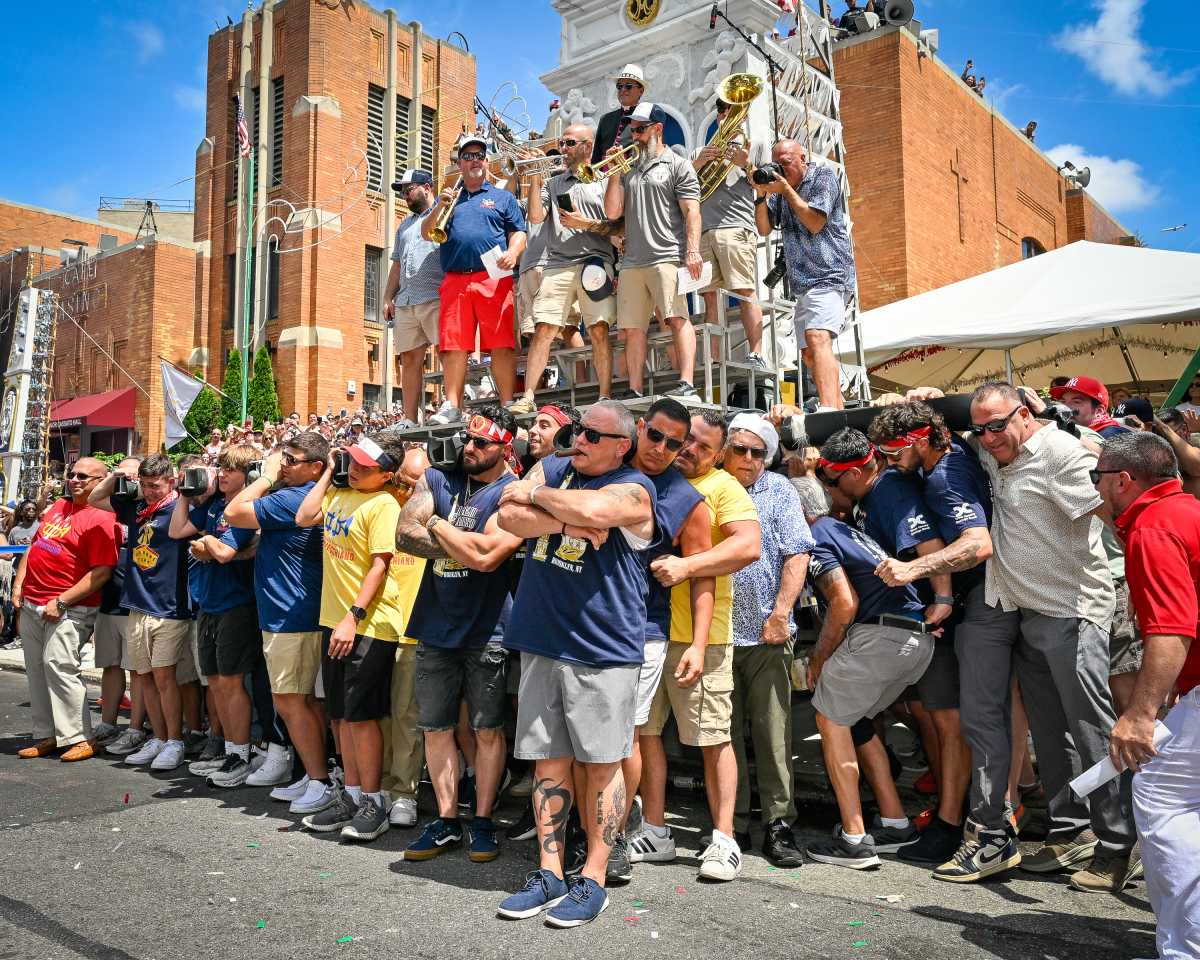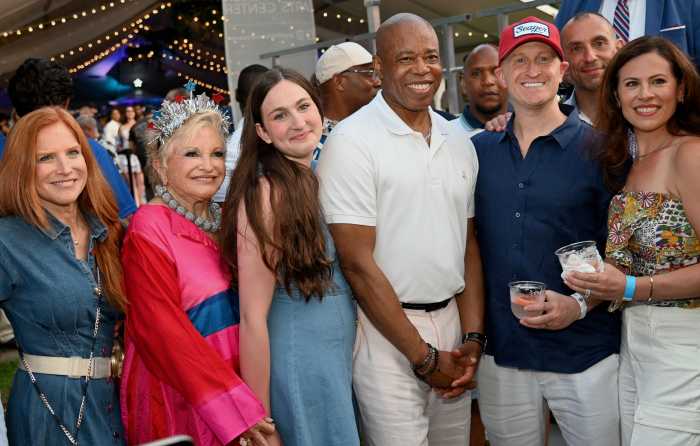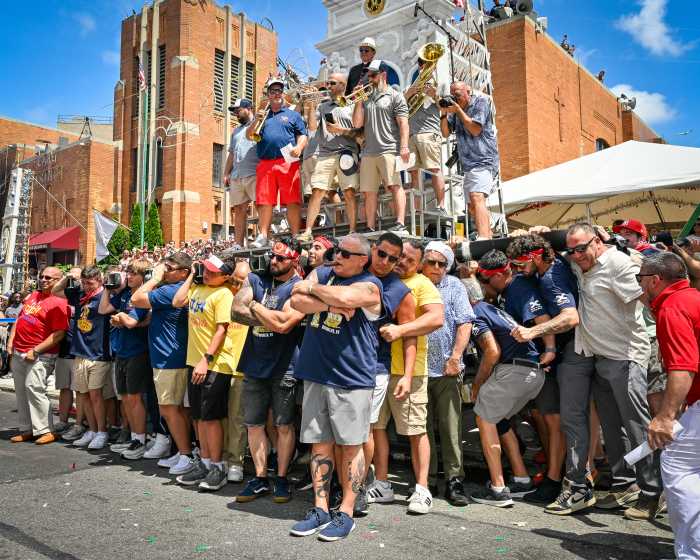By David Stanke
Welcome omission of ‘sacred ground’ talk
The prospect of the pope visiting the World Trade Center site was eagerly anticipated by many. He is the leader of the largest Christian church in the world. Many Catholics believe he speaks with the authority of God. At a site whose destruction was preceded with the words “God is great,” perhaps I can be forgiven for feeling apprehension. To his credit, the pope’s message was one that no one else has been able to deliver: closure.
It would be unfair to comment on the pope without personal religious disclosure. I am an unaffiliated believer in God, unconvinced that any organized religion speaks for God or has a proprietary hold on the truth. All religions and their leaders are to be watched and judged based on what they produce.
The most evocative religious symbol from the W.T.C. is the I-beam cross which now stands at St. Peter’s Roman Catholic Church one block north of the W.T.C. Many people involved in recovery effort, including the N.Y.P.D. and F.D.N.Y., have Catholic roots. To them this cross was a sign from God, a symbol of hope. I suspect that in less public commentary, it inspired confidence in the victory of Christianity over paganism. After all, God chose the symbol of a cross, not a Star of David or a crescent.
But nothing concerning the W.T.C. is really about God. The attacks were no more an attack by Allah on Christianity than they were an attack by Arabs on freedom. Men seeking power manipulated the religious beliefs of people to serve their selfish, political agendas. It was about power.
After 9/11, there was no rational, religious standard to declare the area “sacred ground.” The W.T.C. is the site of a mass murder. The term sacred ground evolved as tool for some to claim land as their own.
Mention of “sacred ground” resurfaced as the papal visit approached. His visit, some felt, would secure the site (as well as Yankee Stadium, I presume) as sacred ground. Members of W.T.C. Families for a Proper Burial made public calls for the pope to support their cause, declaring any area with potential human remains as sacred. This definition qualifies both the W.T.C. and Fresh Kills in Staten Island.
There is already a permanent location for unidentified human remains in the W.T.C. memorial. The city is currently spending $38 million to search debris not touched since 9/11, mostly in areas adjacent to the site. The Proper Burial people want further search for remains. They want all material with potential human remains moved to yet another site, which will then also become sacred ground. Until there is 100 percent certainty that every remain has been found, some feel the search must continue. But there is never certainty, and this pursuit of sacred ground will keep the wounds festering forever.
The level of dedication is rooted in the Christian beliefs about death and resurrection. Catholics believe that resurrection of bodies at the Second Coming of Christ requires that there be bodies to be raised. To this day, the Catholic Church prefers burial of the whole body to cremation. In event of cremation, it prefers that all remains be held together rather than scattered. This allows God to more easily resurrect the bodies.
The pope visited the United States to rally and support his congregation, not to enforce dogma. His major theme was to bring peace to the world. To this end, he addressed the abuse of children perpetuated within the church, he stressed acceptance among various faiths, and he encouraged peace and human rights throughout the world.
This man speaks for millions of people in such troubled countries as Angola, Columbia, Rwanda, Haiti and Ireland. With this broad awareness, how would he address the W.T.C. population, represented by two dozen, randomly selected individuals?
Do not doubt that the pope was fully briefed on every aspect of the history and politics of the W.T.C. site. His prayer at the site reflected all of the politically correct terminology. He specifically included every category of people who died, even identifying Port Authority personnel (no insult to the P.A. intended here). He prayed for the sick and injured, for those who lost loved ones and for the people at the Pentagon and in Pennsylvania.
With his awareness of W.T.C. details, his core message was peace, understanding, and moving on with life. He chose this path to honor those who died. He prayed for God’s help to “work tirelessly for a world where true peace and love reign among nations and in the hearts of all.” And at a place where people have been chastised for suggesting that we “move on,” the pope had survivors and family members thanking him for giving them closure. He never mentioned sacred ground.
I have long contemplated the meaning of the events and aftermath of 9/11. I have too often been told the answer to these questions, and too rarely been offered meaningful insight. Religion, loss, and self righteous indignation have become currency in games of political and personal power. The horror of 9/11/2001 has been used to spread fear and justify violence and hatred. On Sunday, 4/20/2008, I am thankful that a man came to the W.T.C. site with a different message.
David Stanke lives and writes in Downtown Manhattan. His e-mail is davestanke@ebond.com.

































